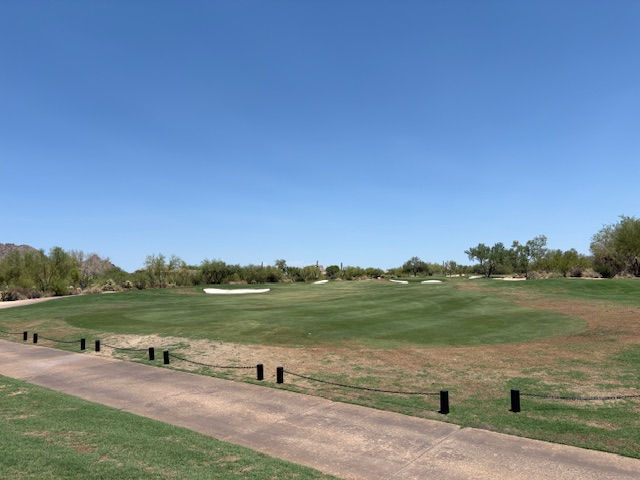Beginning Transition
- Terravita Agronomy
- Mar 3
- 2 min read
As we move into the warmer months, I’d like to provide some insight into our upcoming turf management strategies, specifically the transition from ryegrass back to bermudagrass and the process of helping our non-overseeded greens out of dormancy. These next few months are critical for the health of our bermudagrass and in turn, the success on the subsequent overseed.
Ryegrass to Bermudagrass Transition
Each year, not long after overseed we must shift our focus to the dormant bermudagrass below the ryegrass to ensure a successful transition, especially as we pass the colder frosty months. This process involves several key steps:
Lowering Heights of Cut: As we move into warmer temps, we will quickly lower mowing heights to reduce competition and encourage bermudagrass re-establishment.
Chemical Eradication: Selective herbicides will be applied to chemically remove ryegrass while minimizing stress on the underlying bermudagrass.
Deep Irrigation Cycles: To strengthen bermudagrass and promote deeper root growth, we will adjust our irrigation practices to include deep and infrequent watering cycles. This encourages drought tolerance and overall turf health.
During this transition, you may notice some temporary thinning or discoloration in areas, but this is a normal and expected part of the process. With proper management, the bermudagrass will fully establish itself, providing excellent playing conditions throughout the summer. This gradual transition will allow minimize the appearance of transition, in a perfect world, you will hardly even notice it's happening!
Waking Up Our Non-Overseeded Greens
Our non-overseeded greens are beginning to wake up from dormancy, and our agronomic focus will shift toward encouraging active growth.
Fertilization: As growth begins, we will slowly increase nitrogen and other fertilizer applications to stimulate healthy turf development.
Aerification & Topdressing: Solid tine aerification, light and frequent topdressing, and brushing will be introduced to promote smooth putting surfaces and increased oxygen exchange in the root zone.
Cultural Practices: As the greens gain some momentum, we will ramp up fertility applications, intensify brushing and topdressing, and introduce grooming and verticutting to maintain optimal playability and speed.
The Importance of Fixing Ball Marks
Lastly, as we work to improve and maintain the course, we kindly ask for your assistance in repairing ball marks on the greens. Properly fixing ball marks is crucial for the health of the turf and overall playability. Unrepaired ball marks can cause long-term damage by creating weak spots that are susceptible to disease, weeds, and inconsistent putting surfaces. A properly repaired ball mark can heal within days, while an untreated one may take weeks to recover. Please take a moment to fix your ball marks and encourage others to do the same—it makes a significant difference in the quality of our greens.
We appreciate your patience and understanding during these transitional periods. These efforts are essential for maintaining the high-quality playing conditions you expect. If you have any questions or concerns, please don’t hesitate to reach out. Warmer temperatures and tournament season is upon us!

Comments